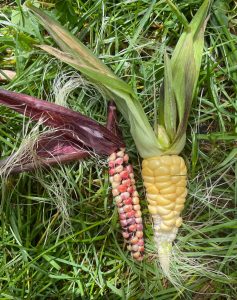Experience-Seeds-Knowledge-Plant Discoveries-Ecological Enrichment-Join Now Click Here!

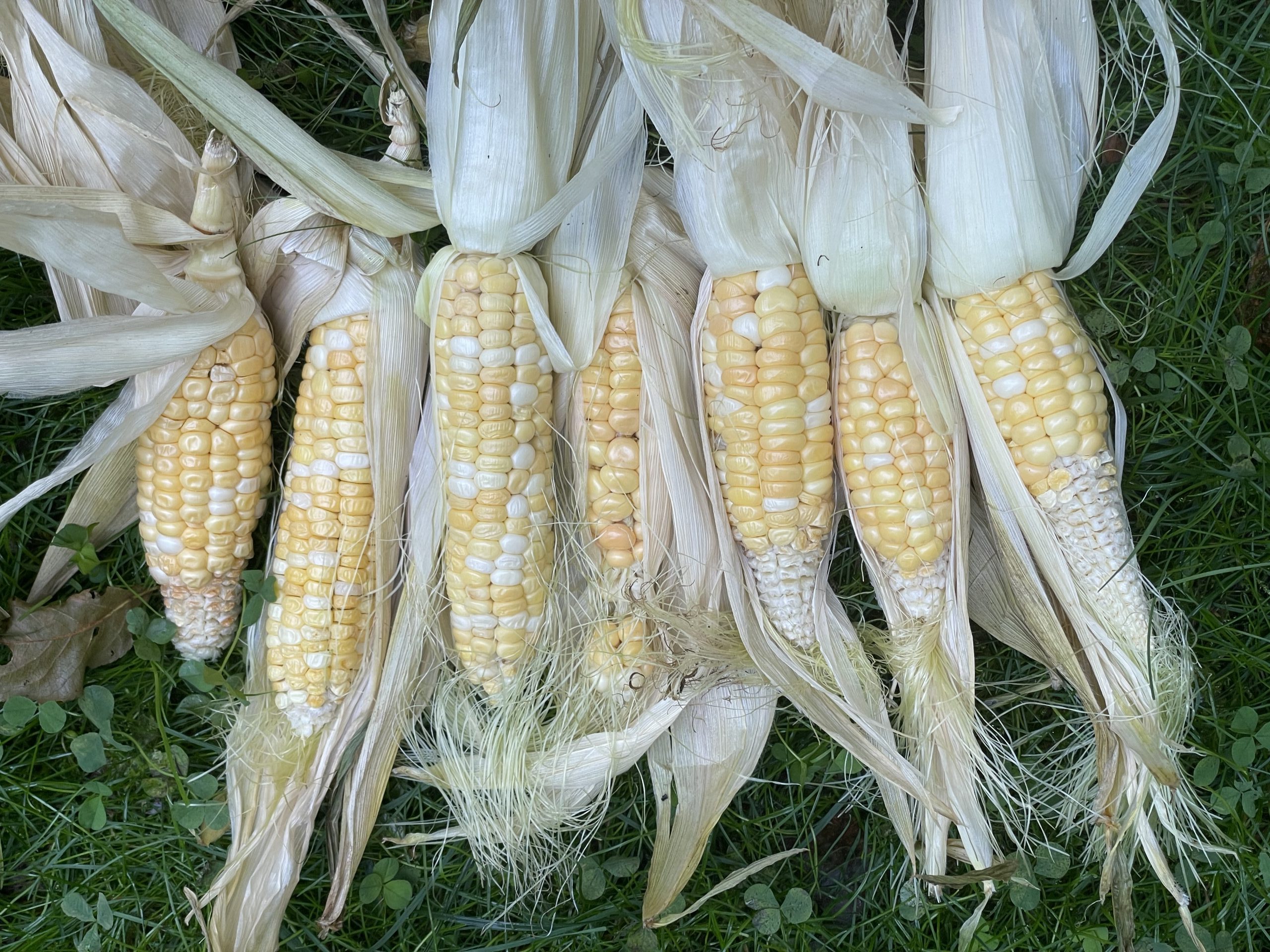
The Corn Plant
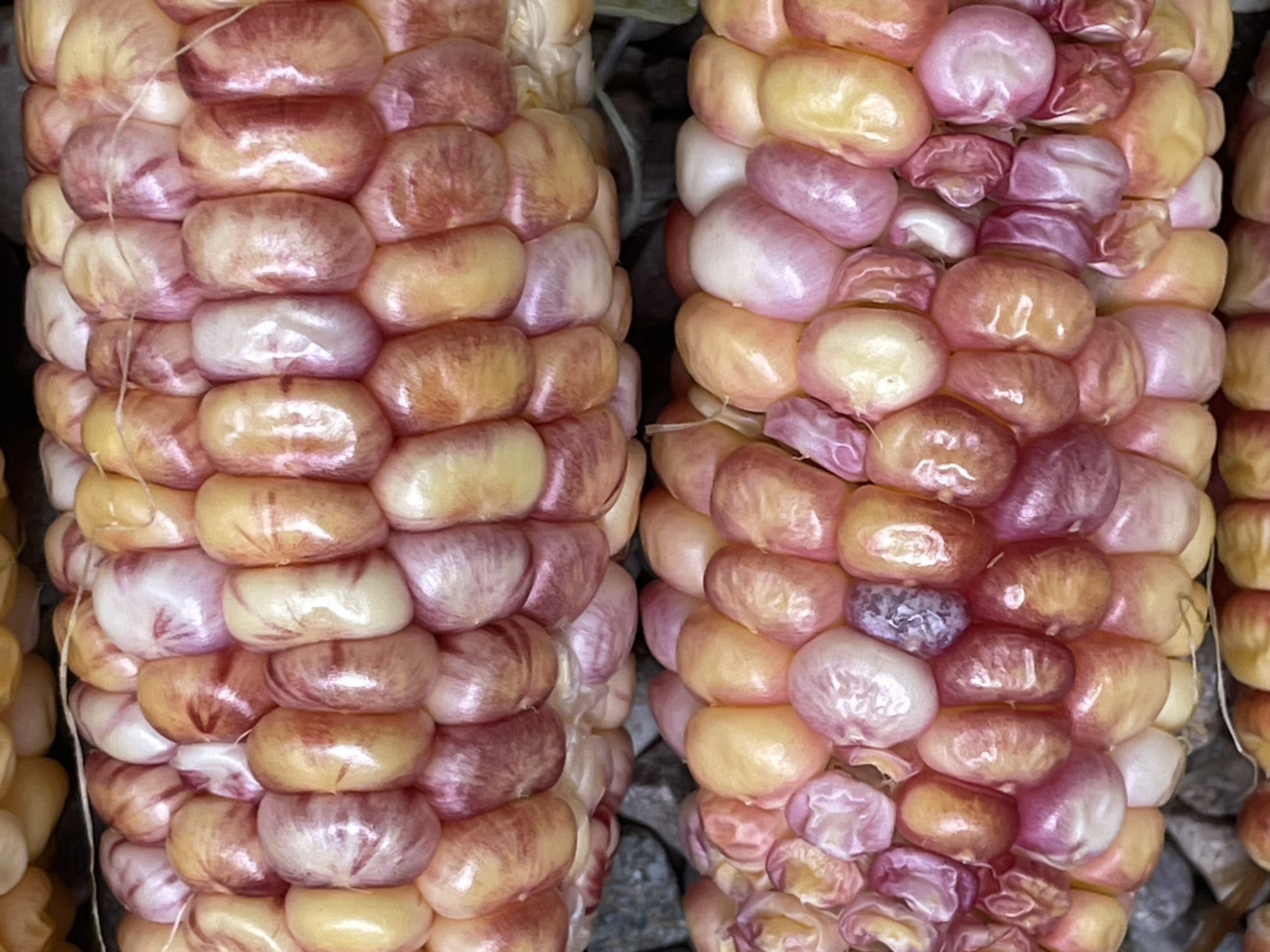
I always wondered why corn was so luxurious in growth and existed in such wonderful dense green fields. It was so perfect to me and completely uniform. In this uniformity I experienced corn as a single magnificent and powerful force of nature able to feed millions of people and animals alike. That was its super power. When I was young I would occasionally take a short cut through a field of it in the fall to get to my elementary school. Later in life while driving through Illinois a rather dramatic change occurred in my perception of corn. In 1988 a major drought occurred throughout the Midwest. While driving to Iowa to visit family members, I realized this single force of nature required a very specific set of circumstances to thrive. The green fields were brown and empty. Even the herbicides did not work because water was not there to activate them. Seeds just did not germinate except for a few velvet leaf plants that sheltered and held the soil from blowing away altogether. The dense green fields did not manifest. Ironically that same year by accident, I grew pod corn at my farm. This is a type of corn that grows like grass with multiple stems where each kernel is wrapped in a sheath. Someone from a living museum farm gave me a seed of it. It was originally found in an attic of one of the early pioneers of agriculture in my area in southwestern Michigan. I only had one plant of it and it remained vigorous and green and produced pods (ears) without supplemental water or fertilizer. I remember thinking this is spectacular. I need to tell people. I tried to tell others of my grass. No one seemed interested. At the end, racoons ate the crop and left me with a bushy grass plant. Since then I have seen pod corn listed in Seed Savers Exchange so I was not alone.
Since that point in time, I kept thinking about those barren fields along I-80 and my pod corn. It was from this experience I kept searching for different types of corn that behaved more like an annual grass and less like the corn we know today. This meant I would create and follow the population along like I did my oak trees and other woody plants I was selecting but I would pay little attention to yields or anything related to what most of us know as modern corn. Instead my focus was on survivability in harsh climates as well as nutrient dense wild corn. I began redefining a short season resource friendly edible corn for humans. That was my goal. Not the 200 bushels an acre corn for ethanol production. Selection was done from the corn side as a corn plant. How does the plant grow? What does it show me? And how can I harness this for the benefit of future generations in the rough and tumble world of a changing climate and what is considered poor soil or no petrochemical inputs of any type. I thought corn could be grown as a side crop in the conversion to woody agriculture practices like in agroforestry. While the orchards are maturing here was a means to use that land resource to its fullest. In the process, I did find a few surprises in route that solved a few issues of annual crops. I did trial a few other corns from the southwestern U.S. and John Sherck’s Darwin John and Seneca Early White Corn. In the end, I found the most success going forward with my teeny plants with little knowledge of modern plant breeding. Here is one of my discoveries that led to my aha moment in the field of corn.
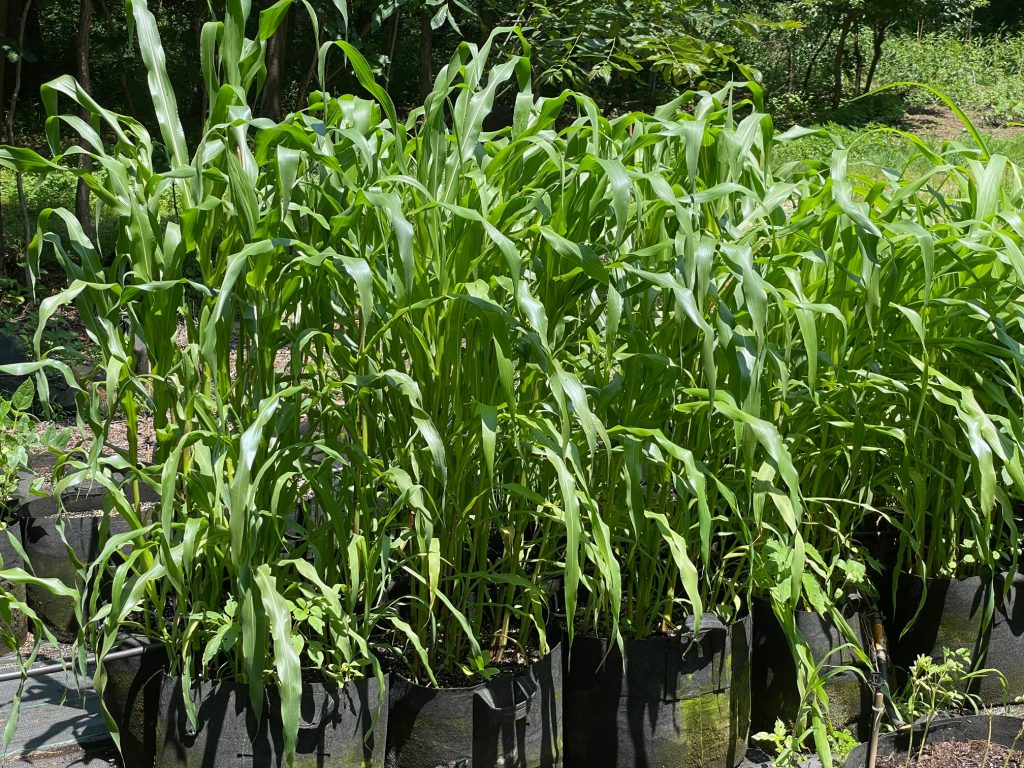
SWEET CORN THAT IS NOT THAT SWEET
For several years I grew the Ashworth sweet corn in my greenhouses in a grow bag. I devoted only one 24 inch wide grow bag for it and grew several plants in one pot. The greenhouse was the only safe place to grow sweet corn as racoons loved it to death when it was outside. I did this every other year or so and got these rather tiny stunted ears of white sweet corn after 60 or 70 days. Greenhouse living was not to the liking of the corn plant. Ashworth sweet corn had the crinkly gene and it was easy to keep track of. The seeds were crinkly! The flavor was very good but it was not the sweet corn most of us know today like Peaches and Cream. It was more like Apple and One percent Milk. It did have a nice floral corn aroma when cooked. I liked the flavor raw too. This variety was bred a long time ago originally from the late Fred Ashworth of upstate New York and the founder of St. Lawrence Nursery. I ordered some seed from a vendor on Ebay. Eventually nursery work overwhelmed me and I left the project alone until I found the Alberta Clipper field corn from Canada about a decade later. This was another 60-70 day short season corn used for corn meal. That corn took roughly three years to express the characteristics fully. It was in storage prior to my grow outs. Finally I decided to let nature takes it course and planted them next to each other to let them pollinate each other. Since it flowers early and there is no commercial corn crops in my area, it is safe here to avoid GMO or other conventional corn from crossing. This would keep its purity. I repeated this procedure for three years. Today I started harvesting my little experiment finding the best ears for next years seed crop. I will try to find a place to grow the corn and give it a name and an identity of sorts. A good name helps in the preservation of its identity over time. Below is the image.
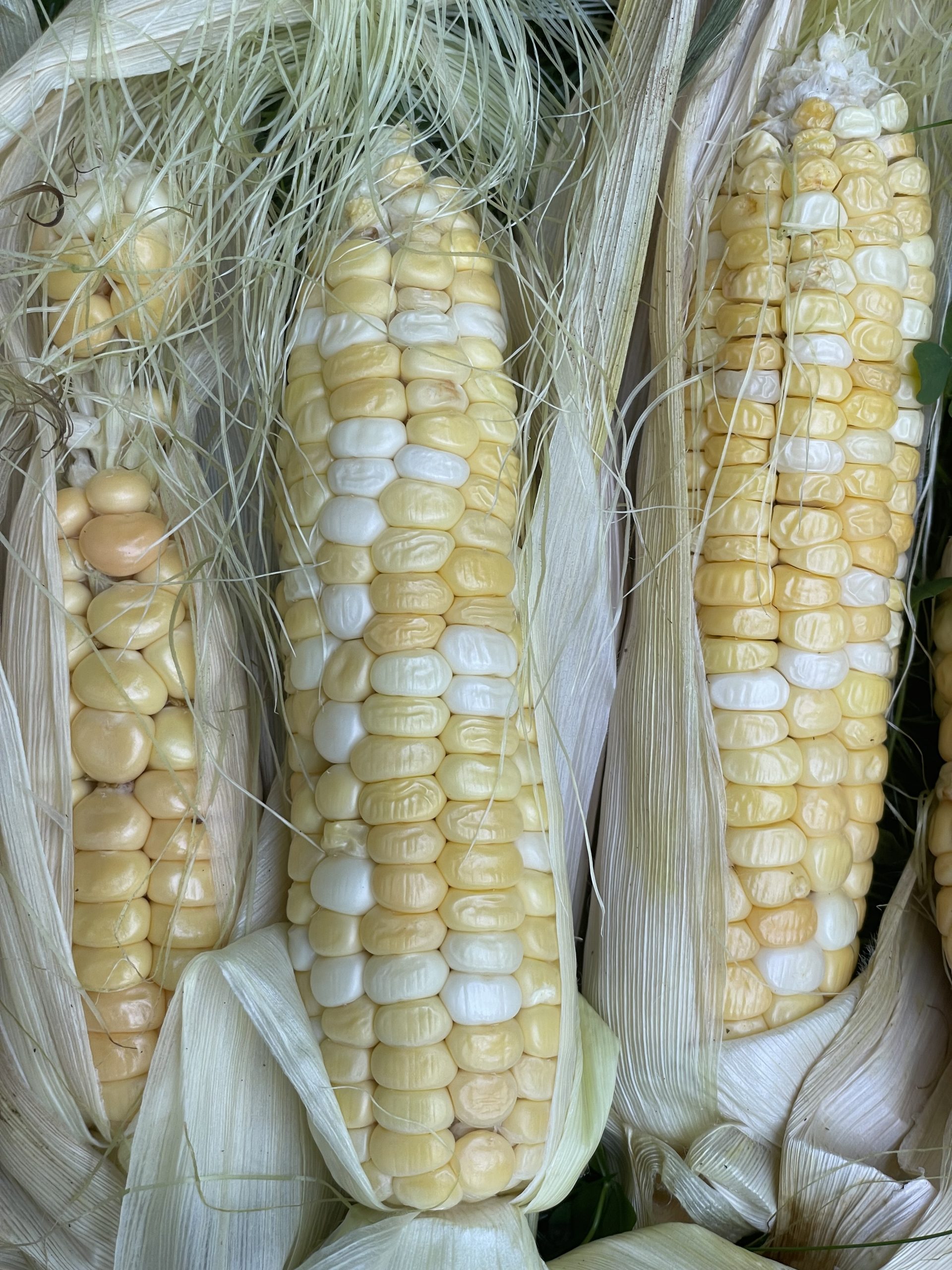
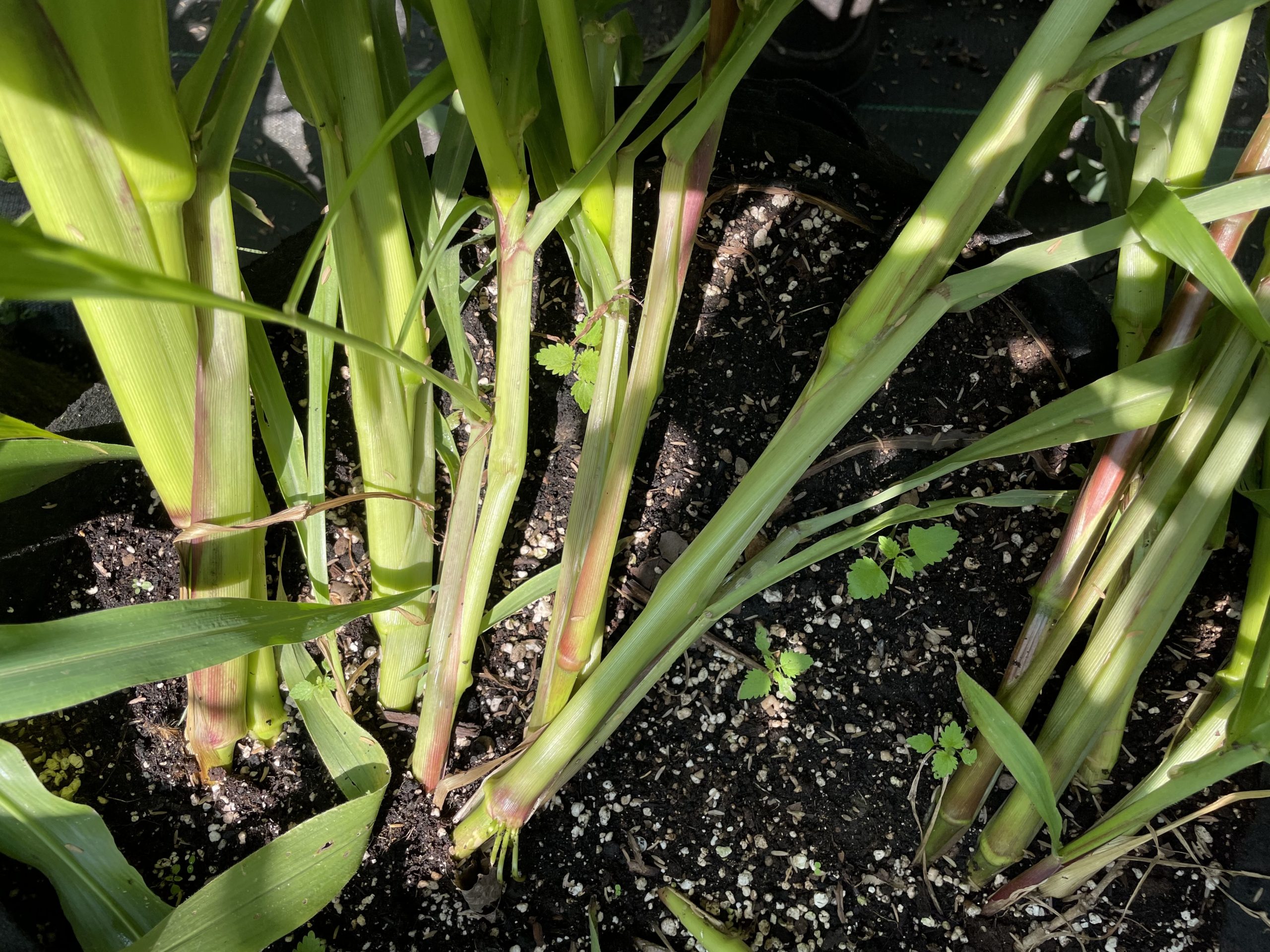
THE CORN PLANT
I treated the corn plant very luxuriantly this year. It was in my grow bags filled with spent soil mix, gypsum and chicken manure. Surrounded by an electric fence and built in micro-irrigation, the corn plant responded with a wonderful crop of delicious corn. Now under the light of day, I can see the fruition of following the population. Dwarf in stature, the corn plant is now only three or four feet tall. Each plant ripens early in 60 to 70 day range. Most have one small ear. The ripening period this year was hampered by the smoke of the Canadian wild fires. I guess this is another example of what to expect in the future as far as ripening periods of all seed crops. With my corn, I can see the food possibilities much more clearly now. I will test it in my kitchen. I will send it off for its nutritional analysis. This is the easy part. The big question is whether others will make use of it. Otherwise, like the pod corn it may end up in a museum as an agricultural oddity or another unexplored avenue of potentiality so common among those who breed plants and release their creations to the world.
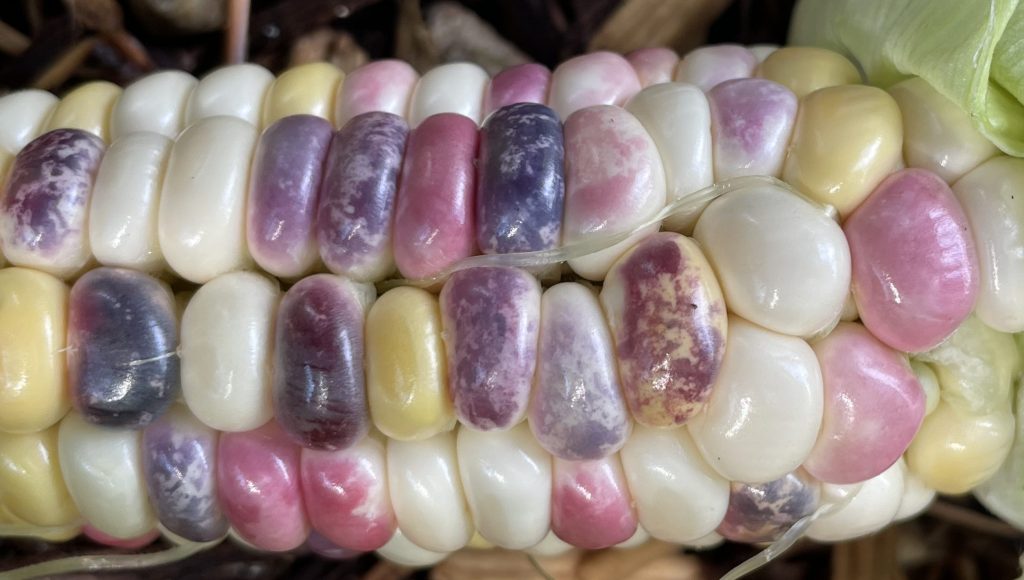
We all hope for a tastier and healthier future. In can happen. It does happen. This change will not come from giant commercial seed sources. It will not be bred at a university or have anything to do with people with advanced degrees in biology or chemistry. In particular, plant breeders will be outdated and cast aside like the slide rule. The new future of research lies within the individual with the exploration of human consciousness. It is from there the possibilities will naturally expand as we begin to agree with the culturing intelligence of plants. In a very deep and personal way much like a family member or old friend from high school we will meet corn at its source and have a discussion. It can happen.
Enjoy. Kenneth Asmus
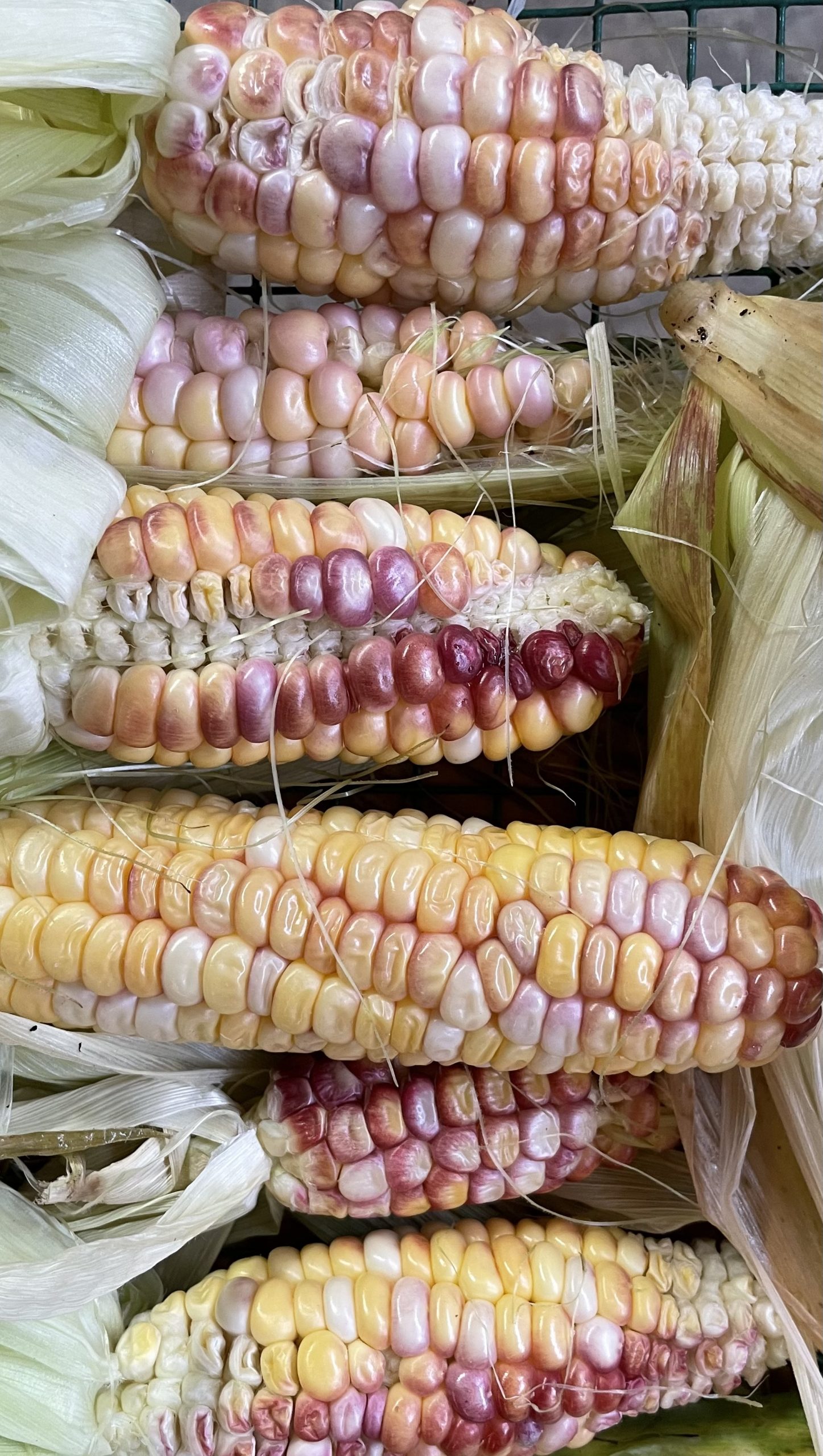
The above image demonstrates different corn selections using Darwin John flint corn, Early Seneca White flour corn and Ashworth sweet corn all of which are very short season varieties. These were all combined one year as a means to add color and variation. Possibly colored corn may be healthier than pure yellow or pure white corn because of the added anthocyanins. The natural pigments found in this cross also adds to the flavor and aroma. The short and rather stunted cobs you see here is the result of me putting too many plants close to each other in the pots. This was so I could evaluate as many individuals as possible in a tiny space. It also allowed me to cross pollinate the plants with the other Ashworth sweet corns. Earliness is my priority here. I measure earliness when the corn plant turns brown and the ears drop down in early August from a planting done in early to mid May. The goal is to shave off as much time as possible for ripening to make the plant ready to harvest in late summer.

The second goal is flavor. I find most corn meal pasty and not very sweet. But I do like corn bread and the variety Bloody Butcher. There was a corn variety that was found in the southeastern U.S. where the plants remain in the fields super late and are bent over for months before harvesting in December. The corn plant is almost horizontal at this point and this supposedly improves the flavor. The idea is to recreate this to a certain degree and make it possible to use corn for human consumption in a more ecological manner taking up less resources while allowing the field to be used for other crops in the same season. Since human edible corn make up less than 5 percent of all corn grown, it might be fair to say that I should have picked a bigger target to improve.
